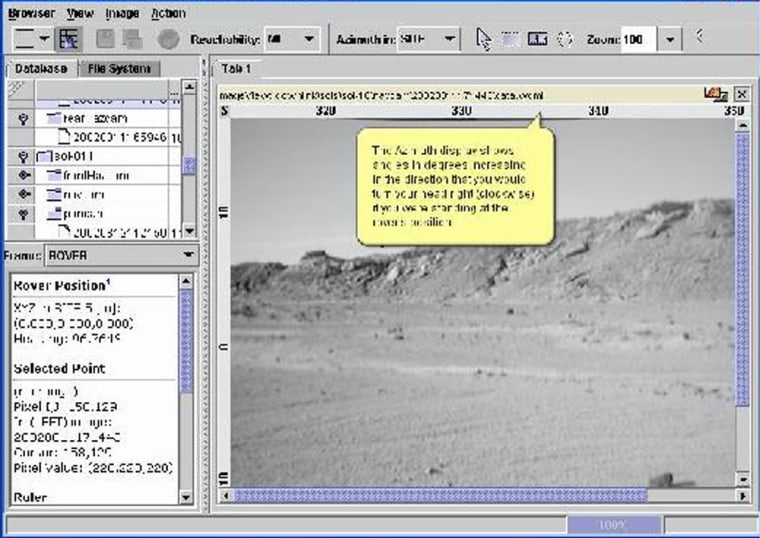The same piece of software that lets people all around the world play video games on their cell phones is now letting scientists drive the ultimate remote-controlled car across the surface of Mars.
Java, the software developed by Sun Microsystems Inc. in the mid-1990s as a universal platform for Internet applications, gave NASA a low-cost and easy-to-use option for running Spirit, the robotic rover that rolled off its lander onto the planet’s surface on Thursday in search of signs of water and life.
For the next three months, NASA scientists and engineers at the Jet Propulsion Laboratory in Pasadena will plot Spirit’s wanderings with the Java-based Science Activity Planner that operates like a digital Gran Turismo.
“It takes all the raw data in the mission data base and builds a 3-D terrain you can spin around and zoom in,” said Gene Chalfant, JPL technical staffer.
With the same point-and-click skills one would need for, say, online shopping, the NASA team will plan Spirit’s daily activities, page through voluminous data and communicate.
“It’s a sandbox, in a way, to try different ideas,” Chalfant said. “You pick the rock you want to investigate and command the rover to move there, and the rover figures out the best way.”
Off-the-shelf software
The team made virtually no changes to an online version of the program, dubbed Maestro, that lets space nuts page through panoramic color images, check out the rover’s wheel-mounted hazard cameras or plan a rover mission just like real scientists.
The Web site — http://mars.telascience.org — has been so popular since its Jan. 2 launch that Sun had to provide extra bandwidth to keep NASA’s servers up and running, Chalfant said.
The simulated rover drives on a 3-D model of the Martian terrain as precise as the one used by the NASA mission.
“(Scientists) do exactly the same thing you can do,” Chalfant said.
Decade-long sojourn
Java’s journey from mundane to extraterrestrial began nearly a decade ago when JPL scientists began noodling with the programming language to create a command and control system for the 1995 Mars Sojourner, said James Gosling, known as “the father of Java.”
The JPL team showed Sun what they had done, and Gosling, a vice president and fellow at the Santa Clara, Calif.-based software and systems developer, was hooked.
“I’m a geek anyway, so it sucks me in,” Gosling told Reuters. He spent so much time at the Pasadena space laboratory that he became an advisory board member.
“They are doing things that people think are science fiction,” he said. “It’s a place to go to have your mind blown. It’s hard to find a government agency ... where people are living their dreams.”
Transcending platforms
Although Java’s data-handling capabilities initially attracted NASA, the code’s ability to transcend the many platforms used by mission scientists and engineers sold the space agency, Gosling said.
“They can have scientists all over the world looking at the data but collaboratively deciding on the way the mission should proceed,” Gosling said. “They are all speaking different languages when they talk to the rover but everybody in the control room is using Java.”
Separately, Alameda, Calif.-based Wind River Systems Inc., created the embedded software in Spirit and its twin, Opportunity, that manage a wide range of functions, including data collection and communications.
